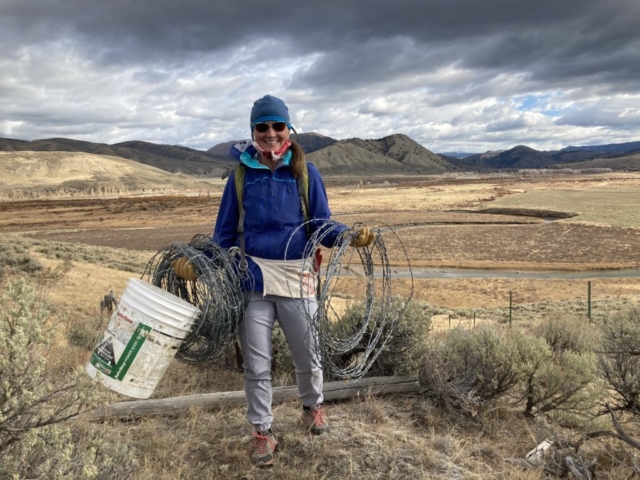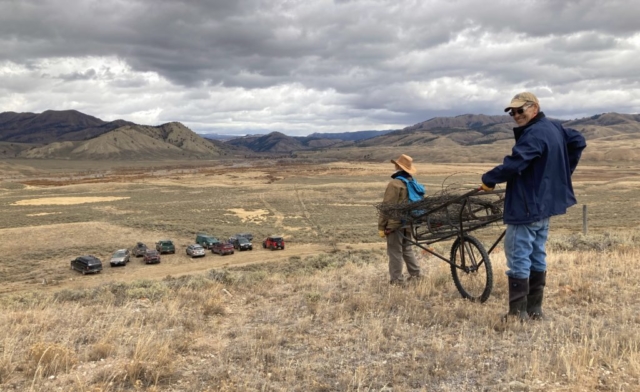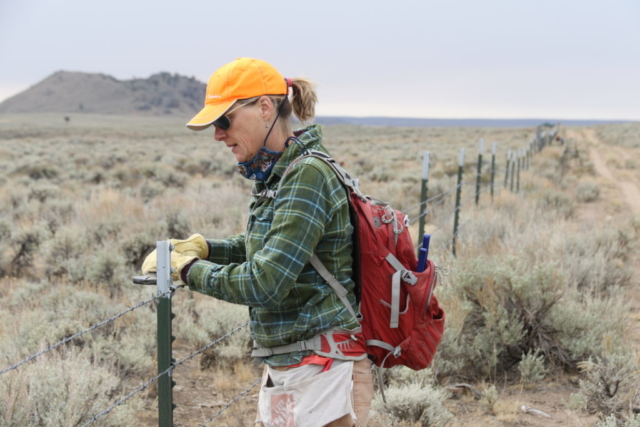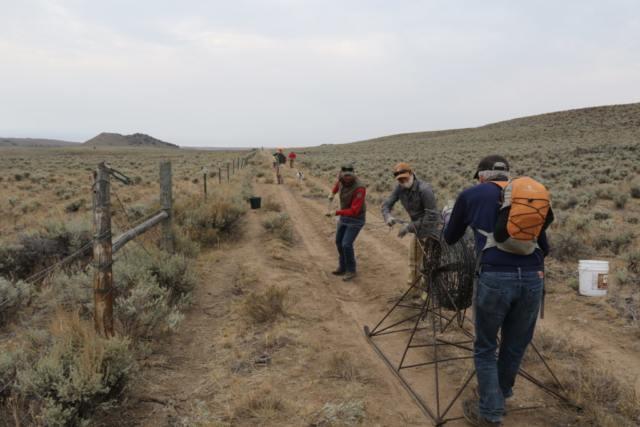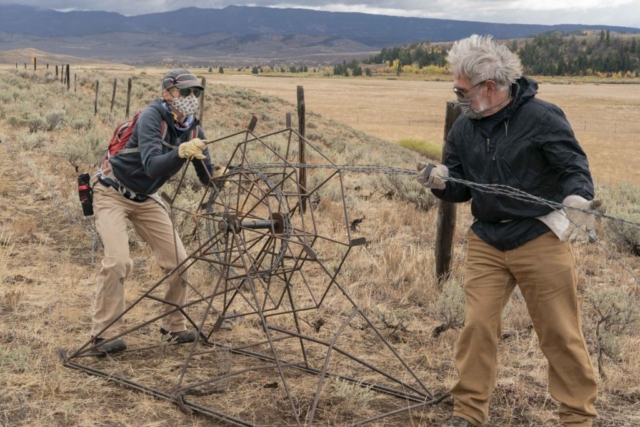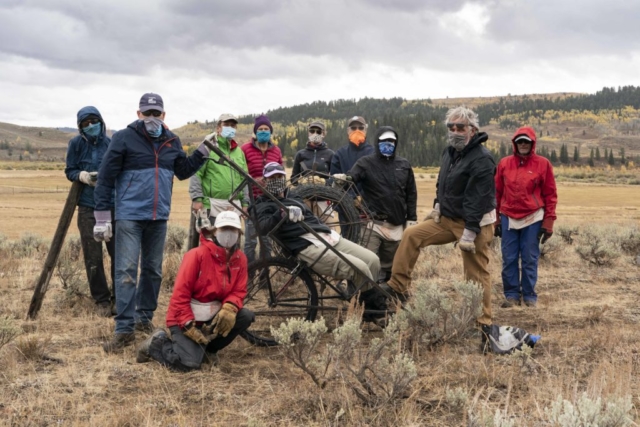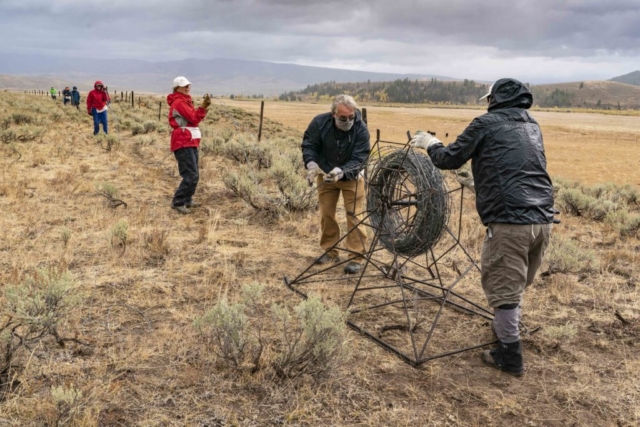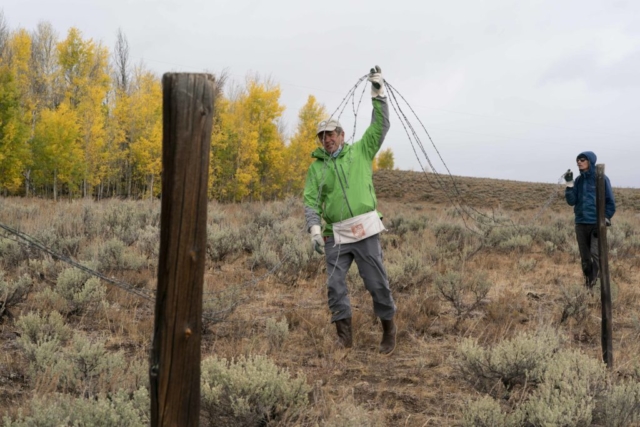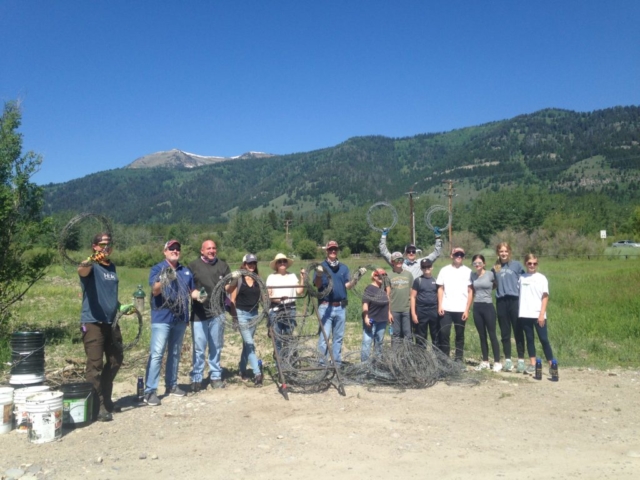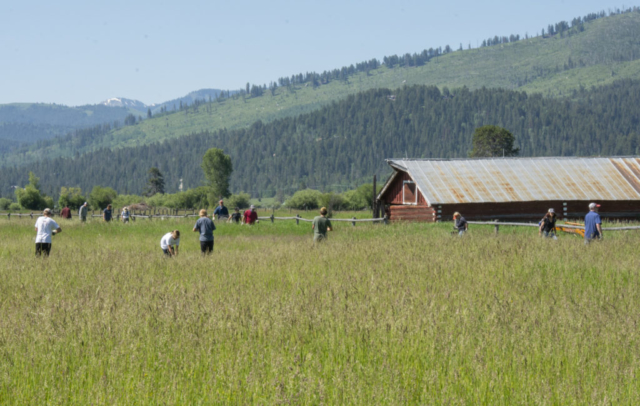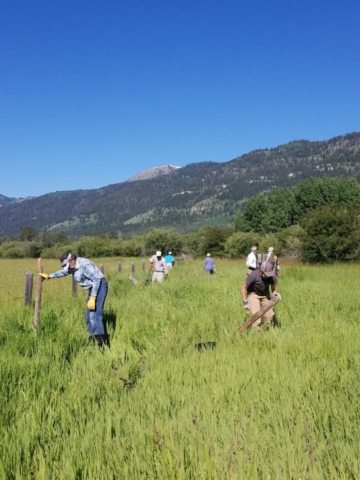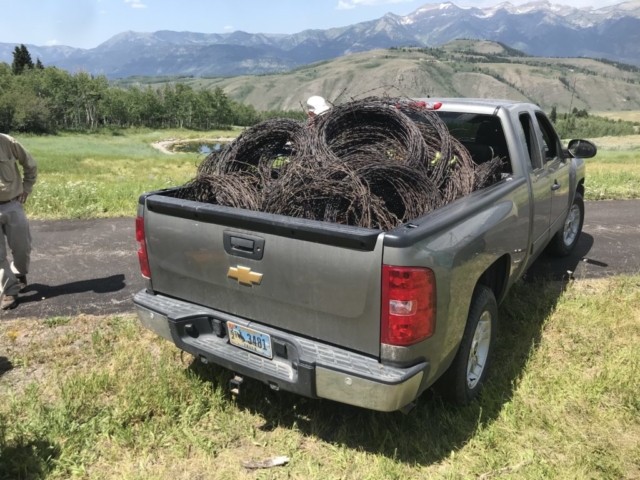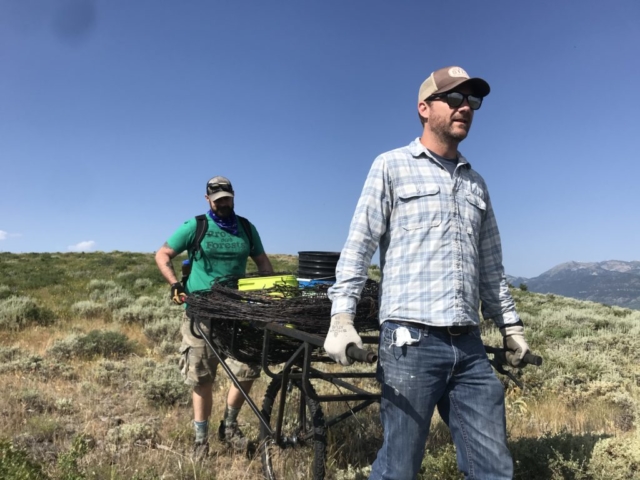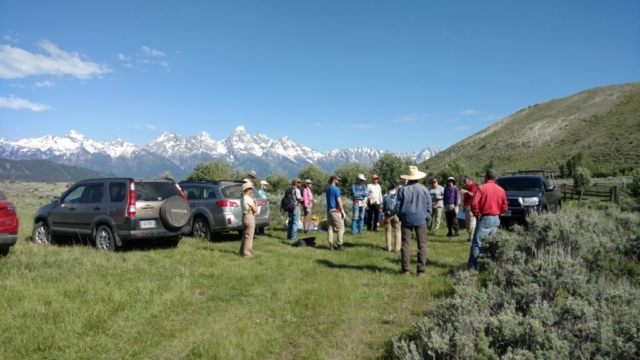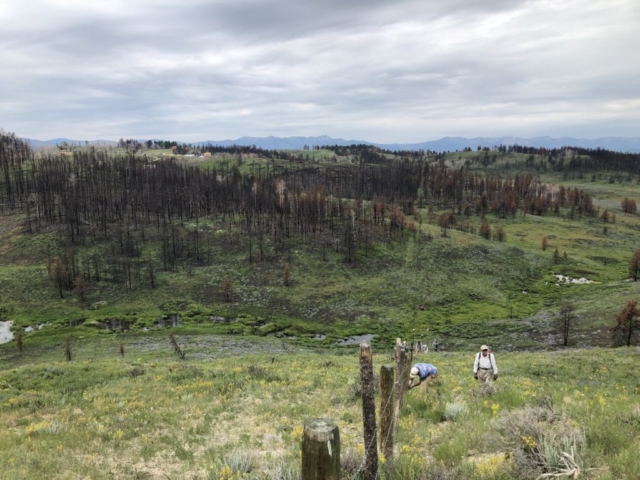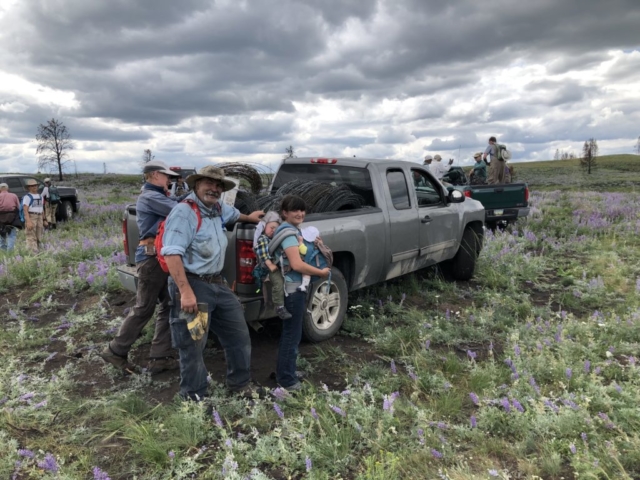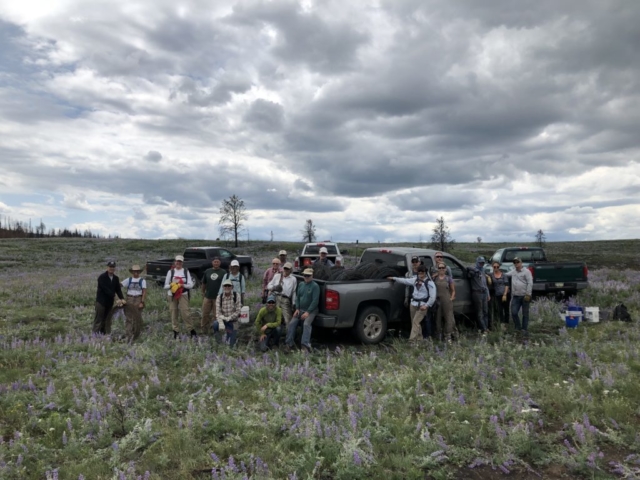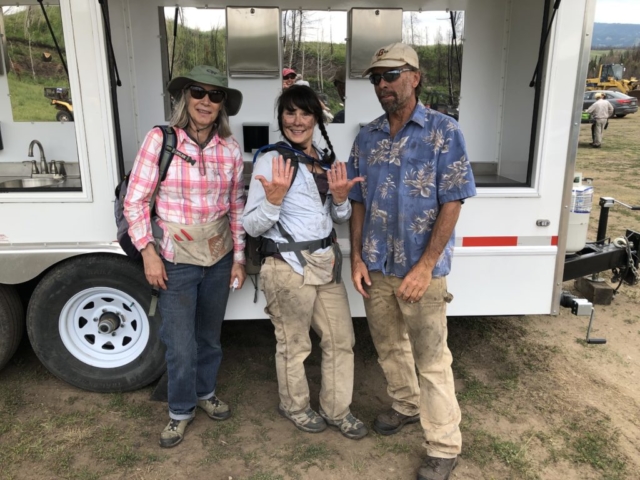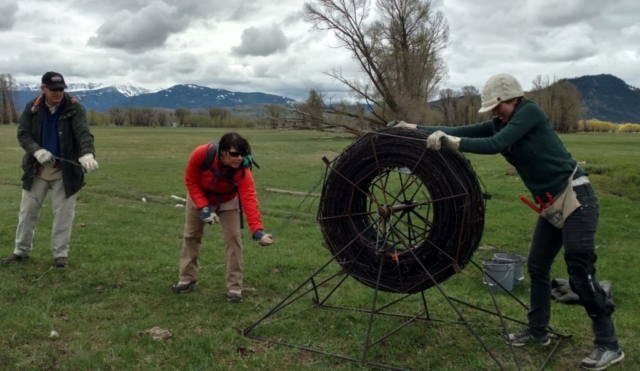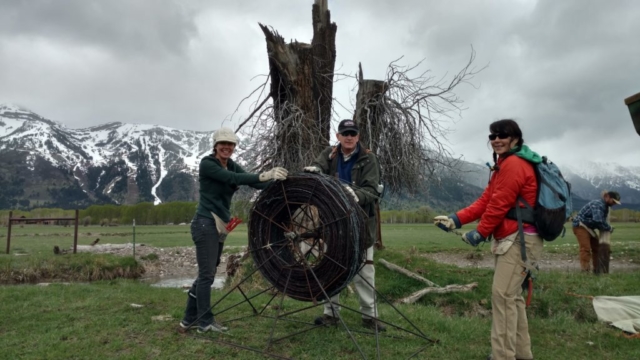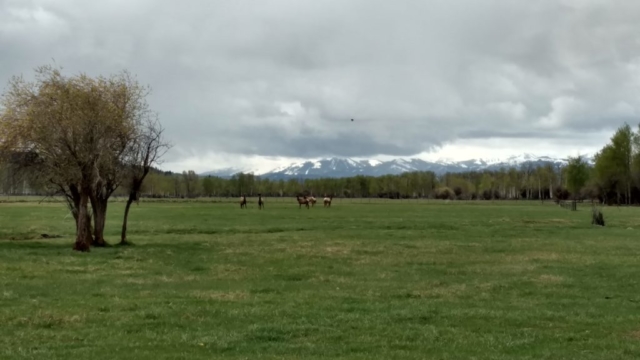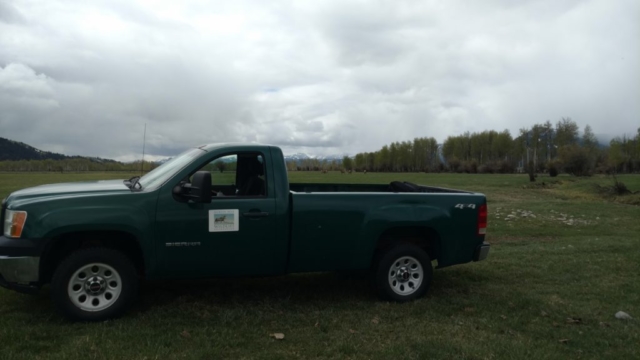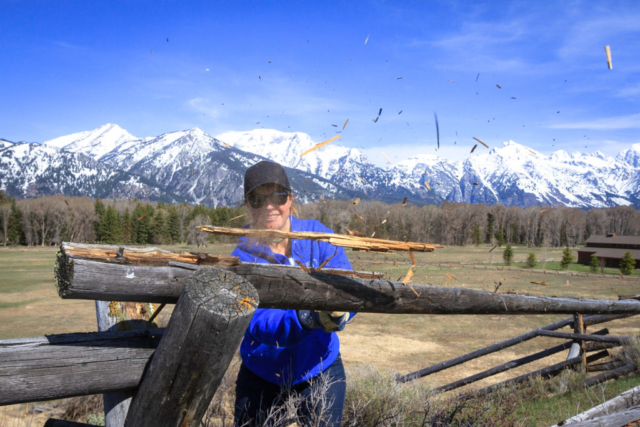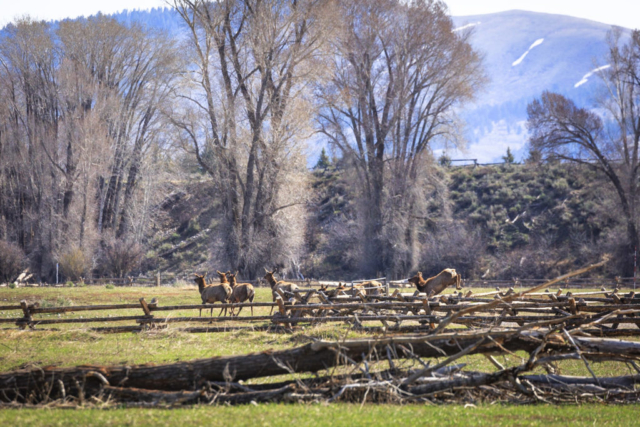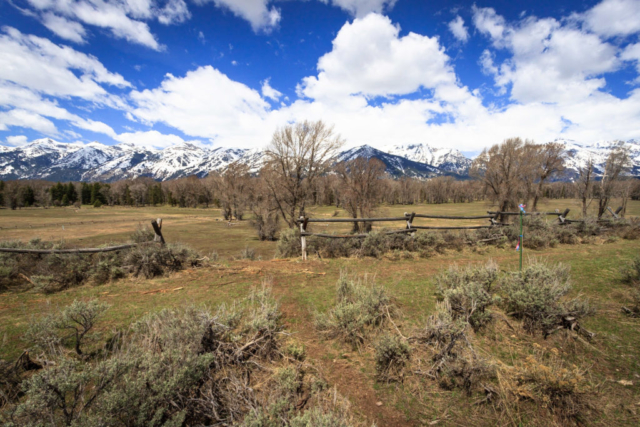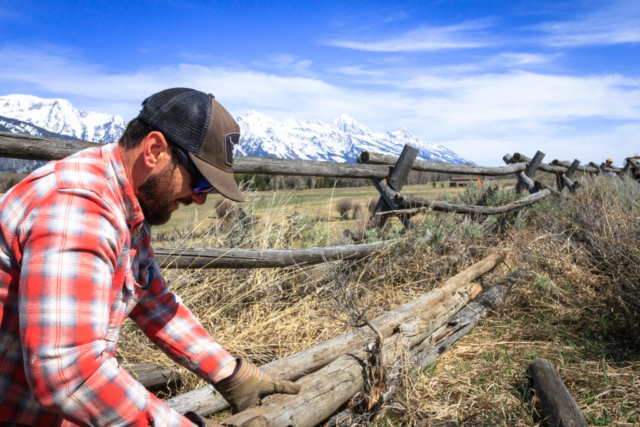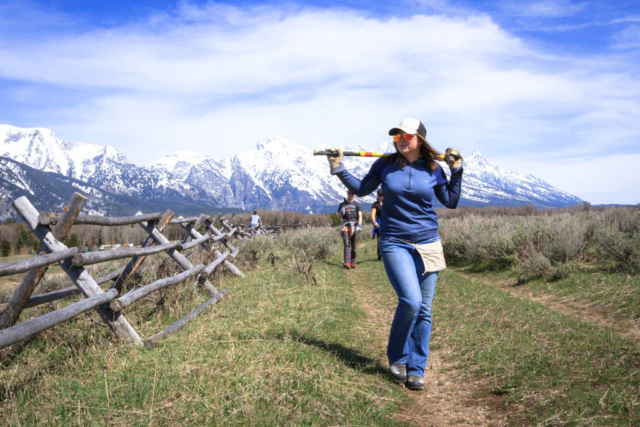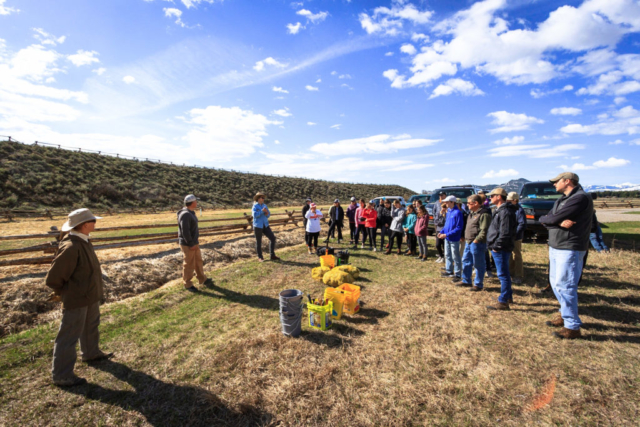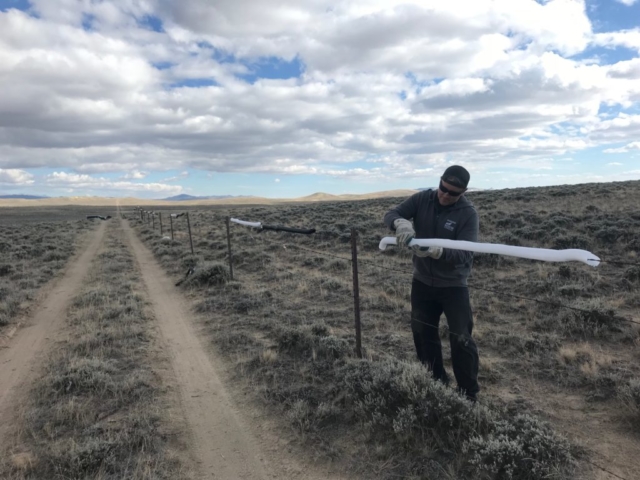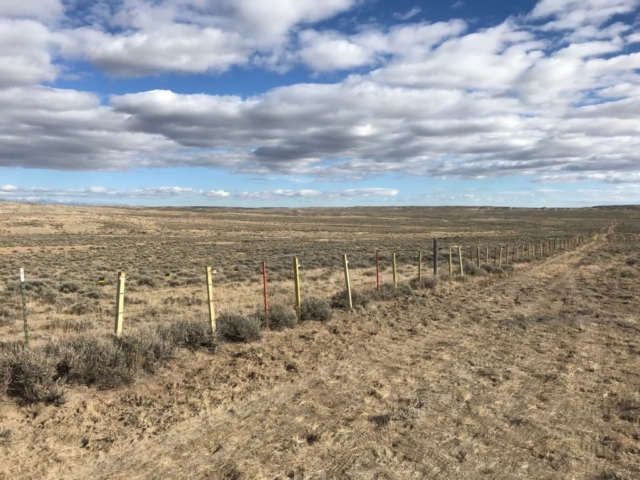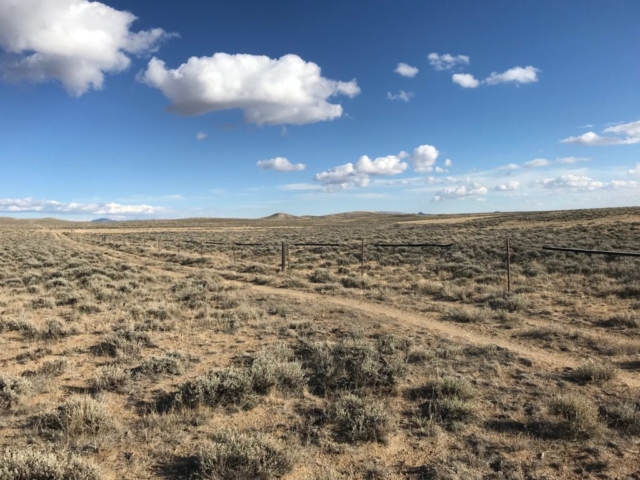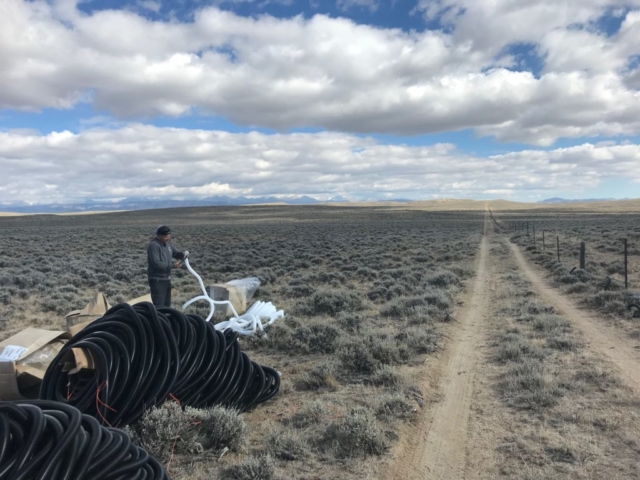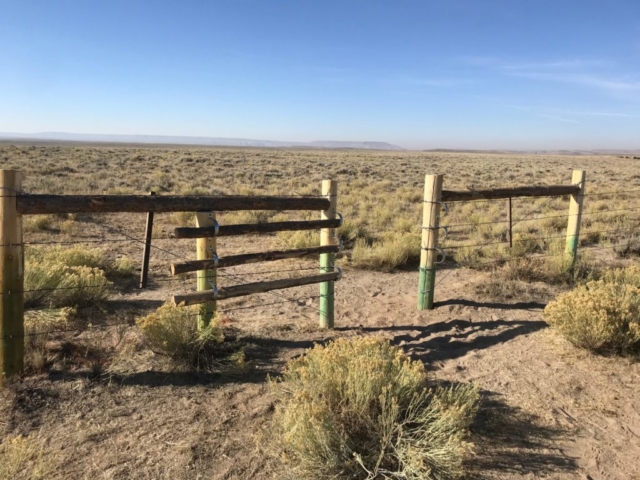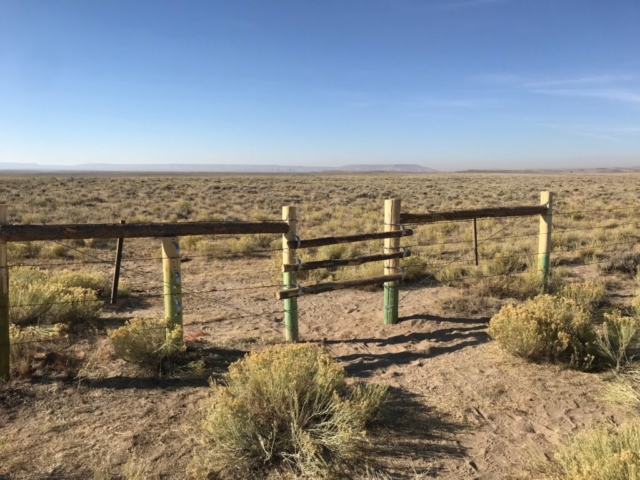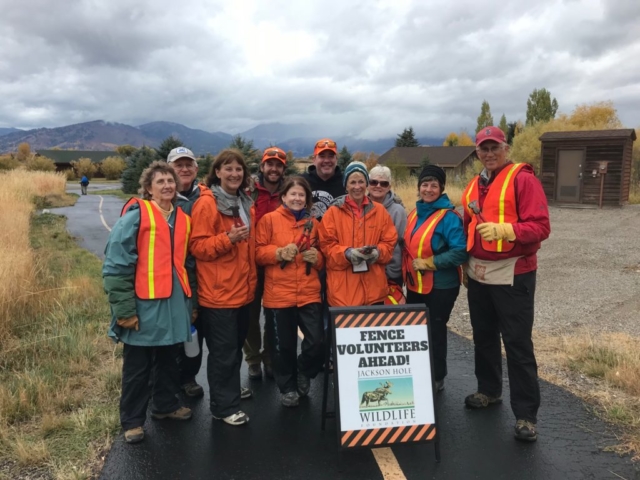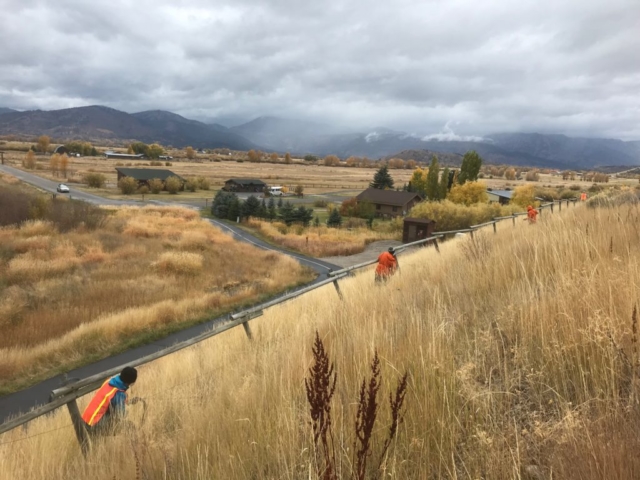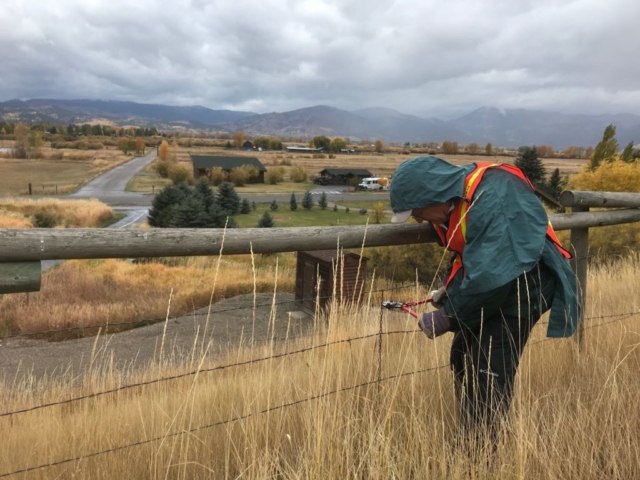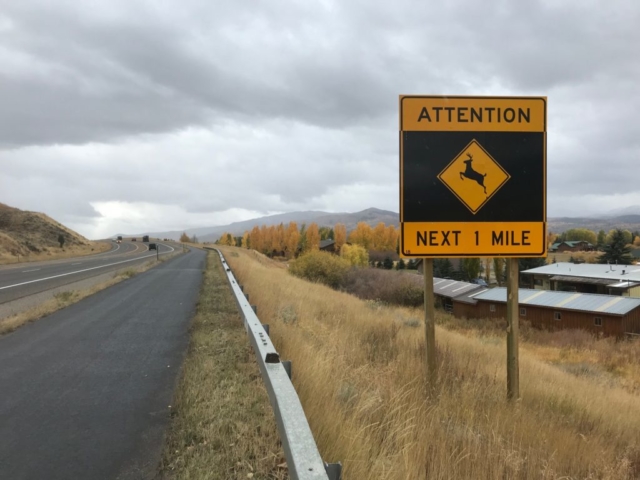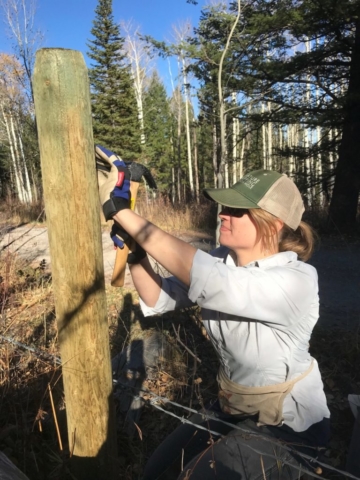Kelly Pastures Fence Removal
Species of Concern: Pronghorn, Bison, Elk
Status: Complete
Where: Kelly Pastures (private grazing allotment in Grand Teton National Park (just south Kelly Warm Springs)
Miles of Fence: 0.6 miles
This two-day project was completed by over twenty volunteers who made the short trip north of town to remove dilapidated barbed-wire just south of the Kelly Warm Springs that was on GTNP land but was not longer being used to contain livestock. We accomplished a little over half a mile of fence removal in the summer of 2019.
Elk Ranch Flats Fence Removal
Species of Concern: Pronghorn, Bison, Elk
Status: In progress
Where: Elk Ranch Flats in Grand Teton National Park (just south of Moran Junction)
Miles of Fence: > 1 mile
Fence Team volunteers have worked in Elk Ranch Flats before to completely remove old barbed wire. This project is modifying existing fence that cannot be removed due to active grazing rights. Barbed wires are being adjusted to wildlife-friendlier heights, and an electric “hot wire” will be installed. In some cases, volunteers have been able to replace barbed wire with smooth wire on this fence. This project is still very much a work in progress.
Hoback Ranches Fence Replacement
Species of Concern: All ungulates
Status: Complete
Where: Hoback Ranches Perimeter Fence
Miles of Fence: > 3 miles
Fence Team volunteers supported residents of Hoback Ranches in replacing over 10 miles of barbed-wire fence with with wildlife-friendlier fencing. Our role was to remove burnt and downed wire so that wildlife-friendlier fencing can be installed later in the fall.
Lake Creek Ranch Fence Removal
Species of Concern: All Ungulates
Status: Complete
Where: Lake Creek Ranch, just outside the southwest boundary of Grand Teton National Park
Miles of Fence: > 1 mile
Fence Team volunteers completely removed a four-strand barbed wire fence running between Lake Creek and the Snake River. This was a high priority fence due to its location in the Snake River riparian zone and the fact that it was an intact barbed wire fence with no wildlife-friendlier modifications. Great work crew!
Bar B Bar Ranch Fence Removal
Species of Concern: All Ungulates
Status: Complete
Where: Bar B Bar Ranch behind Jackson Hole Airport
Miles of Fence: 1
Jackson Hole Wildlife Foundation partnered with Jackson Hole Eco Tours and the Jackson Hole Land Trust to modify around one mile of buck and rail fence on private property. This fence ran atop the edge of a large terrace, making it all the more impassable to elk moving to and from the Snake River riparian corridor. While total removal was implausible (some landowners enjoyed the aesthetic of the fence), we were able to remove enough of the fence to allow many places where elk could pass through. Some passage points were created along easily identifiable game trails, which made the job easy!
Pinedale Fence Modification
Species of Concern: Greater-Sage Grouse, Pronghorn, Mule Deer
Status: Ongoing
Where: Bureau of Land Management land near Pinedale, Wyoming
Miles of Fence: 4+
Click for Map of Project Sites
Jackson Hole Wildlife Foundation is currently partnering with the Bureau of Land Management (BLM) to modify fence on BLM land which has been identified as presenting a major barrier to pronghorn. Because this fence is actively used to contain stock, the fence will be modified, not removed. Modifications include installing drop-wires, raising bottom wires to a “wildlife friendlier” height of 16″, installing smooth wire in lieu of barbed wired, and creating gates in fence line which allow for pronghorn passage in high use areas.
A second phase of the project includes modification of certain fence lines that have been identified as especially lethal to Greater-Sage Grouse. Jackson Hole Wildlife Foundation is assisting Teton Raptor Center in testing several different treatments to existing fence, with a goal of identifying a preferred treatment that will make fence more visible to flying birds, and as a result drastically reduce fence strikes and mortalities. Select fences and treatment zones will be regularly monitored during the winters of 2018 and 2019 to identify a preferred treatment.
Rafter-J Fence Fence Removal
Species of Concern: Elk, Mule Deer, Moose
Status: Complete
Where: Rafter-J along Highway 191
Miles of Fence: .25
Jackson Hole Wildlife Foundation partnered with Teton Science Schools and Road Scholar to remove .25 miles of obsolete barbed wire fence along Highway 191 south of Jackson near the Rafter-J housing development. Elk and mule deer are known to cross the highway at this location, and removing the fence will prevent animals from crossing the highway only to “feel trapped” by the fence, and potentially move back onto the road.
C-V Fence Removal
Species of Concern: Moose, Elk, Mule Deer
Status: Complete
Where: C-V Ranch on Moose-Wilson Rd.
Miles of Fence: .5
Jackson Hole Wildlife Foundation partnered with Teton Science School’s “Young Women in Science” program to remove dilapidated barbed wire fence on the C-V Ranch property along the side of Moose Wilson Rd. Fence has now been removed on both sides of the road, allowing for easy passage for wildlife and minimizing the change and animal will be “trapped” on this roadway, which has historically seen a high volume of wildlife-vehicle collisions.
Fish Creek Road Fence Modification
Species of Concern: Mule Deer, Moose, Elk
Status: Complete
Where: North Fish Creek Road
Miles of Fence: .25
Jackson Hole Wildlife Foundation partnered with Snake River Ranch and a local landowner to modify .25 miles of barbed wire fence by raising the bottom wire to 16″ and installing a “drop wire” system, so that all the wires on the fence can be dropping in fall and winter when Snake River Ranch is not using the area for cattle grazing. As shown in the video, only minutes after we dropped the wires we watched three mule deer cross the fence line. Moose are also reported to be common in the area.
Jackson Hole Wildlife Foundation
Office Location:
25 S. Willow St., Suite 10
Jackson, WY 83001
Mailing Address:
PO Box 8042
Jackson, WY 83002
All rights reserved.
Privacy Policy

